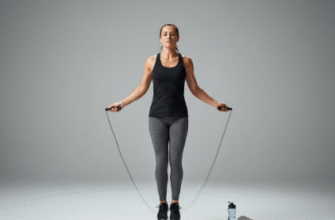We’ve all been there. The burst of enthusiasm, the new gym membership, the running shoes still pristine in their box. January resolutions, pre-holiday shape-ups, a sudden urge to just *move*. It starts strong, maybe lasts a few weeks, perhaps even a couple of months. Then, life happens. Motivation wanes, routines crumble, and the activewear drifts to the back of the drawer. The cycle repeats. Why is it so hard to make physical activity a lasting part of life, instead of a temporary fling?
The answer often lies not in the lack of willpower or the wrong exercise plan, but in the foundation of our motivation. We often chase surface-level goals: lose ten pounds, fit into old jeans, get ‘toned’ for an event. These are outcomes, finish lines. And once the finish line is crossed (or seems impossibly far away), the drive often disappears. To build a truly sustainable active lifestyle, we need something deeper, something more personal. We need to find our ‘Why’.
What Exactly is This ‘Why’?
Your ‘Why’ isn’t about a number on the scale or a specific aesthetic. It’s the core, intrinsic reason that resonates deep within you, providing the fuel to keep going long after the initial excitement fades. It’s the fundamental value or feeling that movement connects you to. It’s less about what you want to *look* like and more about how you want to *feel* and *live*. It’s the difference between dragging yourself to the gym because you ‘should’ and choosing to move your body because it aligns with something meaningful to you.
Think of it like building a house. Fleeting goals are like decorating the living room – nice, but not essential for the structure’s integrity. Your ‘Why’ is the foundation. Without a strong, solid foundation, the first storm (a busy week, a bout of tiredness, a tempting sofa) can bring the whole thing down. With a solid ‘Why’, you have the stability to weather those challenges and keep rebuilding.
Moving Beyond the Superficial
Let’s be honest, wanting to look good isn’t a terrible motivator. But it’s often fickle. Appearance changes, societal standards shift, and focusing solely on aesthetics can sometimes lead to unhealthy comparisons or disappointment. More importantly, it often doesn’t provide enough juice to get you moving on a cold, dark morning or after a long day at work.
Consider these common, yet often unsustainable, motivators:
- Weight Loss: While a potential side effect of activity, focusing solely on the scale can be frustrating. Progress isn’t always linear, and factors beyond exercise influence weight. If the scale doesn’t budge, motivation plummets.
- Event Preparation: Training for a wedding, reunion, or vacation can provide a powerful short-term push. But what happens after the event? Without a deeper reason, activity often stops.
- Appeasing Others: Working out because your doctor told you to, or because your partner wants you to, relies on external pressure. It lacks personal investment.
These aren’t *bad* reasons, but they often lack the staying power needed for the long haul. True sustainability comes from within.
Exploring Your Potential ‘Why’
Finding your ‘Why’ is a personal journey of discovery. It’s not about picking something from a list, but about reflecting on what truly matters to you. Here are some common areas where people find their sustainable motivation:
The Feeling Factor: Energy and Mood
How does movement make you feel, physically and mentally? Many people find their ‘Why’ in the immediate benefits:
- Increased Energy: Do you notice less afternoon slump on days you’re active? Does movement actually energize you rather than depleting you? Connecting activity to feeling more vibrant throughout the day can be a powerful driver.
- Stress Reduction: For some, exercise is the ultimate stress buster. A brisk walk, a yoga session, or hitting a punching bag can melt away tension. If activity is your go-to method for managing stress, that’s a potent ‘Why’.
- Mood Enhancement: The mood-boosting effects of exercise are well-documented. Does moving your body lift your spirits, combat anxiety, or simply make you feel happier and more optimistic? This feeling can be a reason strong enough to get you out the door.
Functionality and Freedom
This ‘Why’ connects activity to living life more fully and capably.
- Keeping Up: Do you want the stamina to play tag with your kids or grandkids without getting winded? The strength to carry groceries easily or lift luggage into the overhead bin? The ability to say ‘yes’ to spontaneous adventures? Activity enables participation.
- Maintaining Independence: As we age, staying active is crucial for maintaining mobility, balance, and overall independence. The desire to remain self-sufficient and capable for years to come is a profound motivator for many.
- Enjoying Hobbies: Does your favourite hobby, like gardening, hiking, dancing, or traveling, require a certain level of physical fitness? Linking activity to the continued enjoyment of things you love provides clear, tangible motivation.
Mental Clarity and Focus
The brain benefits immensely from physical activity. Your ‘Why’ might be cognitive.
- Sharper Thinking: Do you find you can concentrate better or solve problems more effectively after a workout? Some use exercise to clear mental fog or stimulate creative thinking.
- A Mental Escape: Sometimes, the ‘Why’ is simply the dedicated time away from screens, demands, and mental clutter. Movement offers a chance to be present in your body and disconnect from mental overload.
Connection and Community
For many, activity is inherently social.
- Shared Experiences: Joining a sports team, a running group, or fitness classes provides camaraderie and accountability. The social connection itself can become the primary reason for showing up.
- Quality Time: Exercising with a partner, friend, or family member can be a way to spend meaningful time together while doing something positive for your well-being.
Pure Joy and Self-Expression
Sometimes, the ‘Why’ is simply because you love it.
- Finding Your Flow: Discovering an activity you genuinely find fun – whether it’s dancing, swimming, climbing, martial arts, or simply walking in nature – makes it feel less like a chore and more like play. The enjoyment itself is the motivation.
- Mastery and Skill: The satisfaction of learning a new skill, improving your technique, or achieving a personal best in an activity you enjoy can be incredibly rewarding and motivating.
How Do You Unearth Your Personal ‘Why’?
This requires some introspection and experimentation. It’s not usually a lightning bolt moment, but a gradual understanding.
1. Reflect Deeply: Set aside some quiet time. Ask yourself questions like:
- When I imagine my ideal future self (in 5, 10, 20 years), what are they able to *do*? How do they *feel*?
- What activities have I enjoyed in the past, even as a child? What felt like play?
- What frustrates me most about feeling unfit or inactive?
- What values are most important to me in life (e.g., freedom, health, connection, growth)? How can activity support these values?
- Beyond appearance, how do I want to feel in my body each day?
Write down your answers without judgment. Look for recurring themes or strong emotional responses.
2. Experiment Widely: You can’t know what resonates until you try it. Step outside your comfort zone. Try that dance class, go for a hike, join a beginner’s sports league, stream different types of home workouts. Pay attention not just to the physical exertion, but to how you feel *during* and *after*. What brings a sense of accomplishment, joy, or peace?
3. Listen to Your Body and Mind: Tune into the feedback. Does a certain activity leave you feeling drained and resentful, or energized and fulfilled? Does it quiet your mind or make it race? Your internal response is a crucial guide.
Finding Your Internal Drive: Research consistently highlights that intrinsic motivation – doing something because it’s personally rewarding, enjoyable, or aligns with one’s values – is a far stronger predictor of long-term adherence to exercise than extrinsic motivation, like rewards or external pressure. When the drive comes from within, the habit is more likely to stick. This internal ‘Why’ acts as a constant, reliable source of fuel.
4. Be Patient and Flexible: Your ‘Why’ might not be immediately obvious. It can also evolve over time. What motivates you in your twenties might be different from what drives you in your fifties. Life circumstances change, priorities shift, and new interests develop. Periodically revisit your ‘Why’ and see if it still holds true or needs adjustment.
Connecting Your ‘Why’ to Daily Action
Once you have a clearer sense of your ‘Why’, it becomes your anchor. On days when motivation is low, remind yourself of it. Instead of thinking, “Ugh, I *have* to work out,” reframe it: “I’m choosing to move my body because I want the energy to play with my kids,” or “I’m going for this walk because it clears my head and helps me manage stress.”
This reframing shifts exercise from a burden to a deliberate act that serves your deeper values and desires. It makes it easier to prioritize activity because you understand its fundamental importance *to you*. It helps you choose activities you genuinely connect with, rather than forcing yourself into something you dislike just because you think you ‘should’.
Finding your ‘Why’ transforms your relationship with physical activity. It moves beyond fleeting goals and external pressures to tap into a sustainable, internal drive. It’s about connecting movement to what makes your life meaningful, functional, and joyful. It’s not about finding the perfect workout plan; it’s about discovering the enduring reason *you* choose to move, day after day, for the long, vibrant life you want to live.








